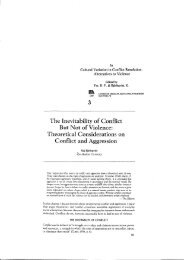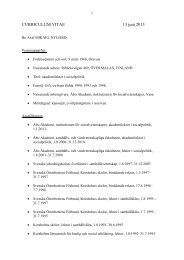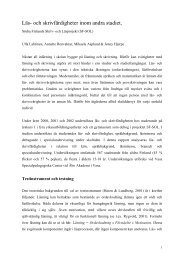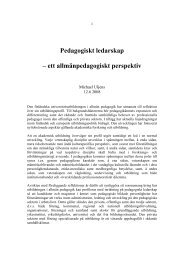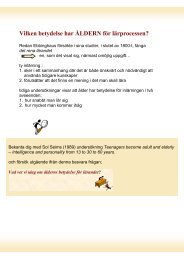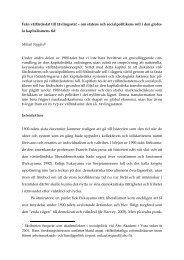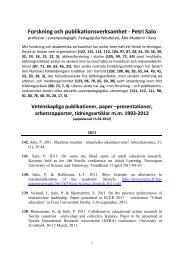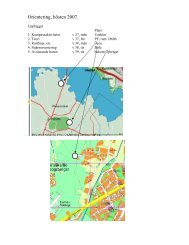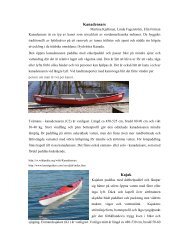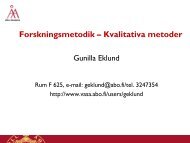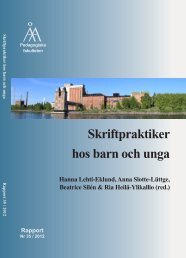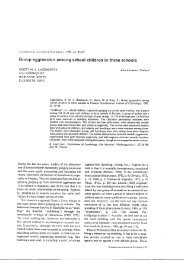Parties, Candidates and Citizens On-Line - Åbo Akademi
Parties, Candidates and Citizens On-Line - Åbo Akademi
Parties, Candidates and Citizens On-Line - Åbo Akademi
You also want an ePaper? Increase the reach of your titles
YUMPU automatically turns print PDFs into web optimized ePapers that Google loves.
TABLE 8. Logistic regression models predicting the voters’ web use.<br />
Gender<br />
Looked for Information Visited Party/C<strong>and</strong>idate Sites Visited C<strong>and</strong>idate Selectors<br />
B SE Exp(B) Sig. B SE Exp(B) Sig. B SE Exp(B) Sig.<br />
.496<br />
.195<br />
1.643<br />
.011<br />
.409<br />
Basic Education 1.302 .220 3.678 .000 1.230 .238 3.423 .000 1.342 .162 3.826 .000<br />
Age<br />
18–24 1.666 .356 5.293 .000 1.831 .360 6.238 .000 1.499 .296 4.467 .000<br />
25–34 1.192 .267 3.292 .000 1.003 .282 2.728 .000 .816 .202 2.262 .000<br />
35–49 .264 .277 1.303 .341 .000 .302 1.000 .999 .342 .191 1.408 .073<br />
Income (€)<br />
20,001–35,000 .393 .284 1.481 .166 .329 .297 1.389 .268 .268 .230 1.307 .245<br />
35,001–50,000 .019 .295 1.019 .950 -.201 .319 .818 .529 .332 .228 1.393 .146<br />
> 50,000 .144 .305 1.155 .638 .057 .322 1.059 .859 .335 .238 1.398 .160<br />
Class - .030 .266 .971 .911 .150 .282 1.162 .596 .267 .198 1.306 .177<br />
Municipality type<br />
Urban 1.012 .338 2.750 .003 1.164 .389 3.203 .003 .746 .223 2.108 .001<br />
Semi-urban .817 .413 2.264 .048 1.062 .463 2.892 .022 .549 .280 1.732 .050<br />
Constant<br />
- 4.555<br />
- 4.652<br />
Cox-Snell R 2 .099 .092 .139<br />
Nagelkerke R 2 .191 .191 .207<br />
% Correct 88.0 90.0 78.3<br />
N 1,181 1,181 1,181<br />
Notes: The three dependent variables are dichotomies that represent the answers to the survey questions<br />
whether the respondents (a) looked for information on the internet; (b) visited party/c<strong>and</strong>idate sites; (c)<br />
visited c<strong>and</strong>idate selectors on the web: 1 = yes; 0 = no. Predictors: Gender: Male (1); Female (0). Basic<br />
education: General upper secondary education (1); Not general upper secondary education (0). Age:<br />
reference category (0) = 50 years or older. Income: reference category (0) = Less than 20,001 €. Class:<br />
White collar (1); Not white collar (0). Urbanity: reference category (0) = Lives in a rural municipality<br />
By <strong>and</strong> large, the models predicting who looked for information <strong>and</strong> who visited<br />
party/c<strong>and</strong>idate sites show a similar pattern. Thus, there is a bias towards an overrepresentation<br />
of the younger voters (18–34 years), the better educated, the ones that live<br />
in urban or semi-urban milieus, <strong>and</strong> men. In particular, we note that the party/c<strong>and</strong>idate<br />
websites attract the youngest voters (18–24 years). The model predicting who visited<br />
c<strong>and</strong>idate selectors shows a broadly similar picture. However, gender proved not to be of<br />
significance here. In addition, the c<strong>and</strong>idate selectors attract also the middle-aged voter<br />
segment (35–49 years). Finally, neither class nor income proved significant in any of the<br />
models.<br />
.210<br />
1.505<br />
.051<br />
.191<br />
-3.261<br />
.151<br />
1.210<br />
.208<br />
77



